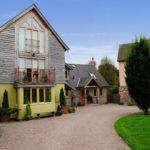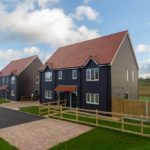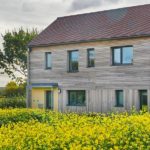How can we make Shropshire’s homes more sustainable?
As the UK government works towards the new Future Homes Standard – which aims to make all new build homes more sustainable – local authorities across the country are rising to the challenge in various ways.
Part of meeting the Future Homes Standard as it comes into effect in 2025 will be a new set of building regulations known as Part L, which aims to deliver a 31% improvement on current sustainability and energy efficiency standards through things like low-carbon heating, fabric improvements and the adoption of renewable energy sources.
Shropshire has been using renewable energy sources in select new-build locations for a number of years. Callaughtons Ash in Much Wenlock, for example, is Shropshire’s first affordable housing scheme to be built to Passivhaus standards and was developed specifically to address the growing challenge of fuel poverty and other running costs in affordable homes.
Building to greener standards
The Callaughtons Ash scheme equips homes with triple glazing, insulation that effectively seals the house, energy efficient boilers, mechanical ventilation with heat recovery (MVHR) systems, and thermally modified external cladding. This makes the predicted annual spend on heating and hot water just £90 a year for a three-bedroom house.
Another example is the Little Stocks Close community-led scheme in Kinlet, near Bridgnorth. These homes, established to provide affordable rented housing for people with local connections to the areas, feature a highly insulated closed-panel timber frame.
The development is also served by its own bio-disc sewage treatment plan and each property is heated by ground source heat pumps using shared ground arrays, making the homes significantly cheaper to run.
An ongoing challenge
But like the rest of the UK, we still have a long way to go before we can make Shropshire’s homes greener and reduce household heating costs.
“There’s a definite need to make homes more sustainable and a keenness in Shropshire to move forward with that, but our county also has unique challenges,” says Tim Baldwin, Affordable Warmth & Energy Efficiency Officer at Shropshire Council.
“We have a large amount of older, hard to treat properties, lower incomes and a higher number of older residents, which also means higher levels of fuel poverty.”
“A large portion of the county runs off mains gas, which has traditionally been the cheapest and simplest way to heat a home. We now need to move past that and towards electrification as a cleaner energy source, but that will drive up prices and make it difficult for us to find the right installers who are accredited to the right schemes. On top of that, we’ll also need significant storage capacity to store any energy generated by renewable sources like solar PV so that we can reuse it.”
Getting the basics right
Tim believes that making homes more sustainable and affordable to run begins with the envelope of the building; the build quality, the materials and the insulation used to keep heat inside and allow more light and cleaner air quality.
“You can actually build properties that don’t need heating systems if you build the fabric correctly,” says Tim. “And ultimately, this means building to Passivhaus standards on more plots – not only within Shropshire but nationwide.”
Making properties cheaper to heat is becoming more critical with every passing year. In 2019, there were some parts of Shropshire where up to 25% of residents were living in fuel poverty, with many more people currently vulnerable to energy price hikes.
Sustainable futures
A number of initiatives exist to address this. The Greener Homes Grant helps to deliver things like solid wall insulation, first time double glazing and underfloor heating installation, for those on a very low income or considered vulnerable. More information on eligibility for this grant can be found at Keep Shropshire Warm.
From April 2022, there will also be the Boiler Upgrade Scheme, which will provide £5,000 towards the installation of an air source heat pump, which absorbs heat from the outside air and condensed into liquid form to heat radiators and underfloor heating.
However, Tim advises that green technologies and renewable energy sources will be inefficient if the fabric of the building isn’t right.
“Insulation is the first step in making any property more energy efficient,” says Tim. “Any draft in any part of a room will make the occupant feel cold, whatever the thermostat says. A property must be airtight and insulated, as well as having good ventilation, to ensure clean air and reduce the risk of mould or damp. Triple glazing is the standard to aim for.”
Ultimately, Tim believes the Passivhaus standard is the most efficient model for future home sustainability. This approach has traditionally been more expensive because some of the higher quality components cost more due to a lack of present demand. Also, many builders are uncertain about how to achieve it, so build in substantial build costs in case they do something wrong and have to correct it.
But as the industry develops and housebuilders seek new ways to meet Part L Building Regulations and the Future Homes Standard, building homes with more energy efficient fabric will increasingly become standard.
For more information about fuel poverty and available grants, or advice about energy in general, visit Keep Shropshire Warm or contact the Marches Energy Agency.
View some of Shropshire’s most pioneering eco-friendly housing schemes in our gallery below.
- The Wintles in Bishops Castle – The Living Village Trust
- Little Stocks Close in Kinlet – Shropshire Council
- Callaughtons Ash in Much Wenlock – Connexus
- The Grange near Shrewsbury – Springbourn Homes







